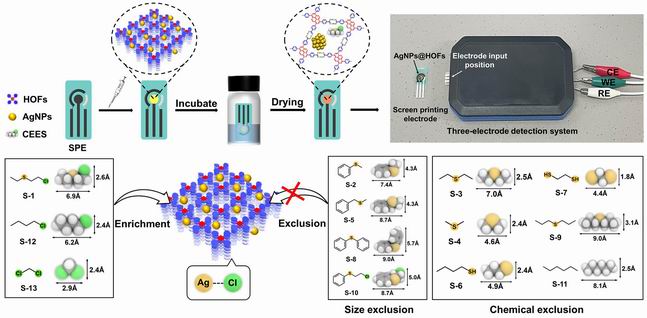The rapid, discriminative, and portable detection of highly toxic chemical warfare agents is extremely important for response to public security emergencies but remains a challenge. One plausible solution involves the integration of porous molecular traps onto a photo-electrochemical (PEC) sensor. Here, we developed a fast and facile protocol to fabricate sub-1 nm AgNPs encapsulated hydrogen-bonded organic framework (HOF) nanocomposite materials through an in situ photoreduction and subsequent encapsulation process. Compared to traditional semiconductors and selected MOF materials, these AgNPs@HOFs show significantly enhanced photocurrent. Most importantly, the portable PEC device based on AgNPs@HOF-101 can selectively recognize 9 different mustard gas simulants, including 2-chloroethyl ethyl sulfide (CEES), based on synergistic size-exclusion and specific recognition. The extremely low detection limit for CEES (15.8 nmol L–1), reusability (at least 30 cycles), and long-term working stability (at least 30 days) of the portable PEC device warrant its use as a chemical warfare agents (CWAs) sensor in practical field settings. More broadly, this work indicates that integrating porous molecular traps onto PEC sensors offers a promising strategy to further develop portable devices for CWAs detection with both ultrahigh sensitivity and selectivity.
https://onlinelibrary.wiley.com/doi/abs/10.1002/adma.202202287

